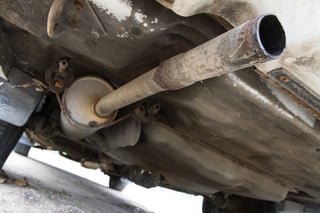 Propane, diesel fuel, and electric — fuel options for school district transportation administration have never been better.
Propane, diesel fuel, and electric — fuel options for school district transportation administration have never been better.
According to the Environmental Protection Agency (EPA), American school buses transport approximately 25 million children more than four billion miles each year. In response to government programs, environmental impacts, costs of operation, and fluctuating gasoline prices, school administrators and transportation officials continue to evaluate alternative bus fuels to eliminate expensive trips to the gas station.
Propane, hybrid or diesel fuels—current news on alternative options
Alternative fuels offer options to save on costs and support new transportation technologies. There is currently no “best” fuel option to serve all transportation needs of school districts with varying climates and in differing terrains. For now, administrators are looking for fuels that serve the needs of their particular district and budget.
Current types of alternative fuels include:
Propane:
Produced as a byproduct of petroleum refining and the processing of natural gas, propane is a cleaner burning fuel that is generally more pure than gasoline. When burned, propane leaves behind fewer residues, helping keep engines clean longer without leaving behind carbon deposits that add engine wear.
Although a propane bus costs more than a gas-powered bus, gasoline prices are higher than propane — even when you take into account the fact that propane delivers slightly fewer miles per gallon. In addition to less pollution and lower costs to operate, buses that run on propane are quieter than those running on other fuels.
A 2014 study by the U.S. Department of Energy (DOE), reached conclusions (compared to use of diesel fuels) that include:
 School districts in the study were able to save approximately 50 percent on cost per mile with propane compared to using gasoline or diesel fuel.
School districts in the study were able to save approximately 50 percent on cost per mile with propane compared to using gasoline or diesel fuel.- The cost of propane buses and support equipment was recouped in three to eight years.
- Greenhouse gases were reduced and air pollution resulting from school buses declined.
- All five school districts involved in the study were interested in continuing to pursue propane for the cost savings.
Hybrid or electric:
As with electric or hybrid cars, the major benefit of electric-powered school buses is the total lack of emissions and low fuel cost. Electric buses do not require the mechanical upkeep of gasoline, propane, or diesel-fueled buses. The ride is quiet and smooth. Other benefits — besides no trips to the gasoline station — include:
- Higher powered batteries make electric and hybrid electric school buses a more viable option. Premium charging systems can currently charge an electric bus in approximately three hours.
- New tech also allows electric buses to reduce costs by redirecting battery power back to the grid, reducing electric bills and helping out in a power outage.
Electric buses are substantially more expensive than a bus that still goes to the gasoline station for diesel fuel. While propane buses are approximately $15,000 more than a diesel-run bus, electric buses cost approximately $100,000 more than a diesel bus. Advancements in technology, novel leasing arrangements, and lower costs through mass production may change the expensive picture of electric buses in the future.
Diesel fuel:
Many school district transportation officials across the country find diesel fuel works best for their district. Newer diesel fuel buses offer the advantages of diesel fuel with much less environmental impact. A few of the advantages of diesel fuel include:
- Diesel fuel is often more cost efficient than gasoline. Diesel fuel also beats natural gas for affordability and fuel mileage.
- Diesel fuel is less combustible than gasoline, increasing transportation safety.
- Retrofitting a diesel fuel bus is a good option for school districts looking for longer fleet life and lower environmental impact.
New fuel options help school districts lower costs and boost safety. New transportation technology like the SafeStop bus tracking app help school districts and parents do the same—creating a brighter future for school bus transportation.




